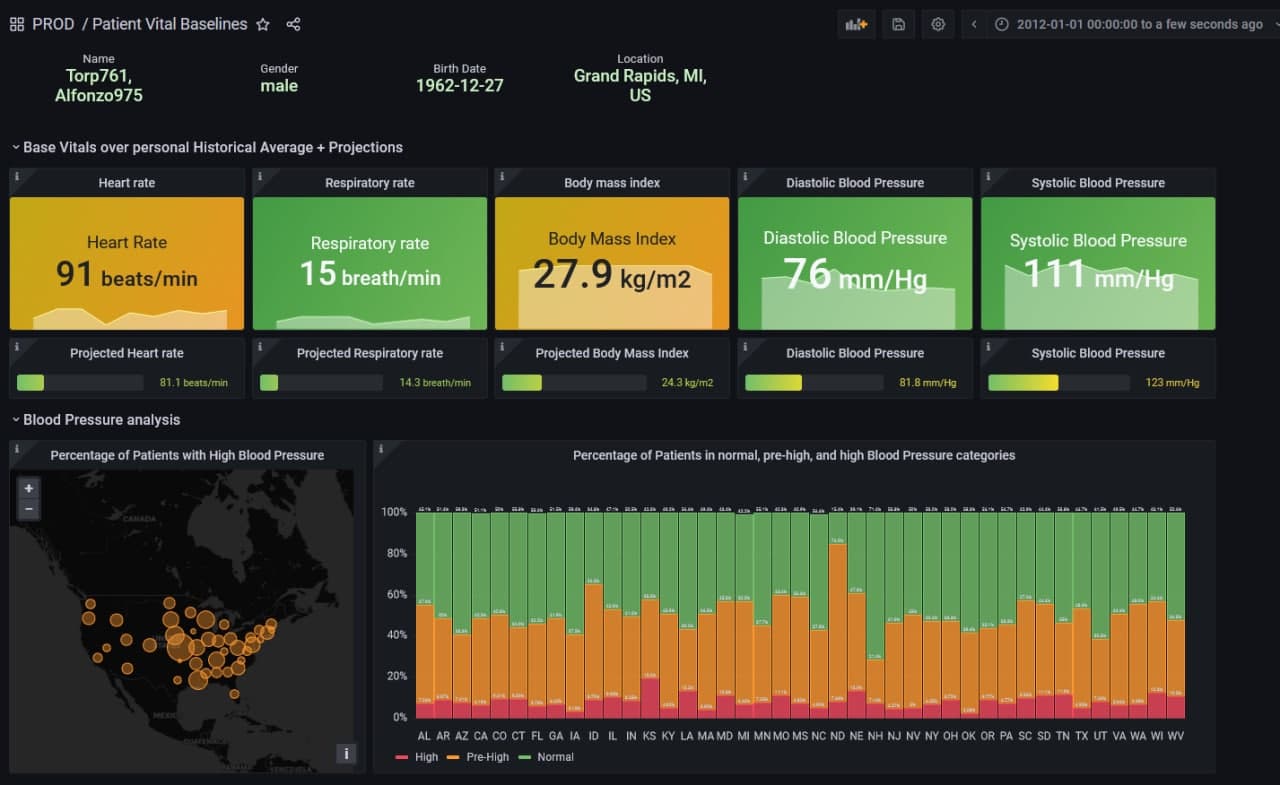Two weeks ago, I partook in a hackathon revolving around Fast Healthcare Interoperability Resources (FHIR) — a standard defining the format of electronic health records. This experience was an eye-opener, a true deep-dive below the surface to the rest of the iceberg that is healthcare data. Using FHIR, teams were challenged to address particular problems in any way they pleased — as long as it leveraged integration to FHIR systems.
Our team spent the majority of the time playing around with the data — it was not until the last few hours that we addressed the problem and built a cute little vitals baseline dashboard. It was something clean, simple, and illustrated only what we wanted to — patient vitals and vital correlations.
We did not win unfortunately. There were a plethora of other really neat FHIR projects, leveraging all sorts of tech from machine learning frameworks to AI-powered parsers.
Either way, we packaged up our project and archived it away for later to fiddle with.
It was during a git commit that I began to wonder when I’ll be seeing this code again.
How many projects reach the end-of-the-line?
How many projects never seek fruition?

Cross-posted from Medium:
https://medium.com/@TOHacks/making-viable-hackathon-projects-the-secret-unix-philosophy-bf599ef88f07
